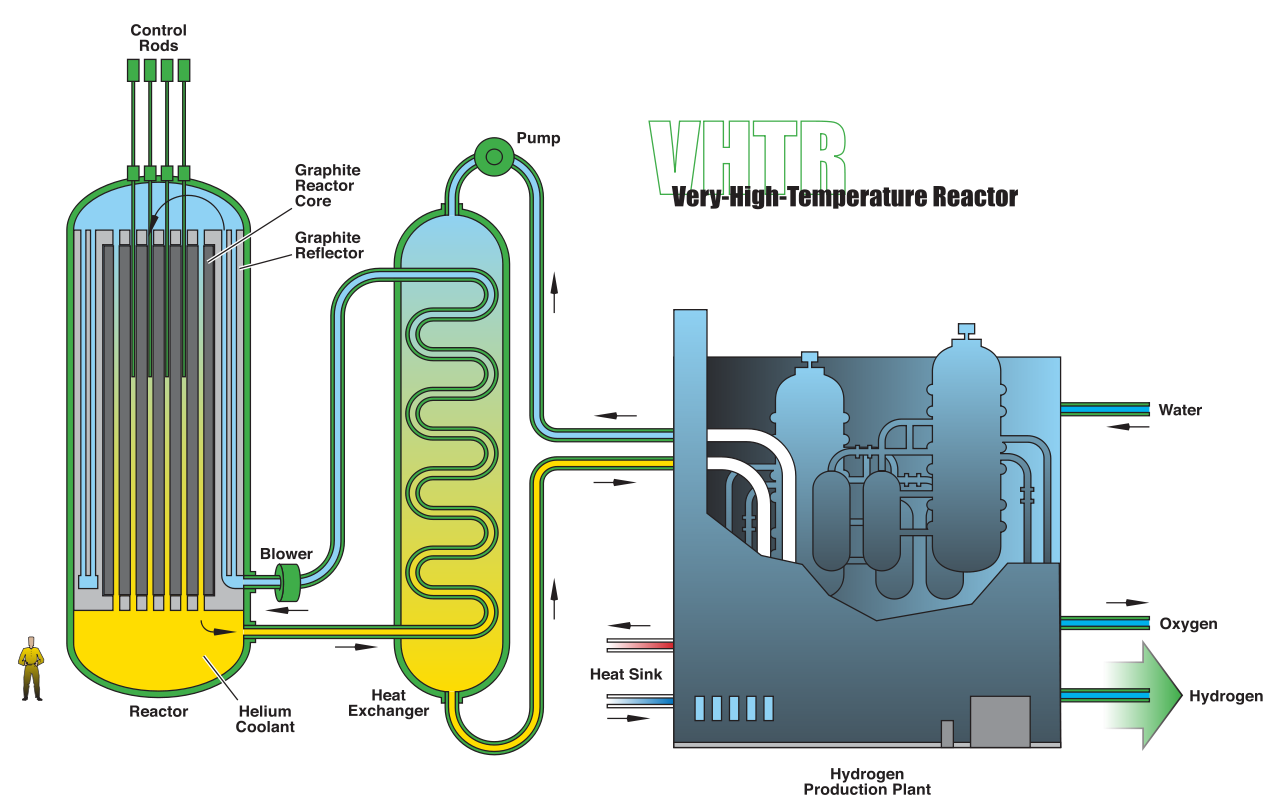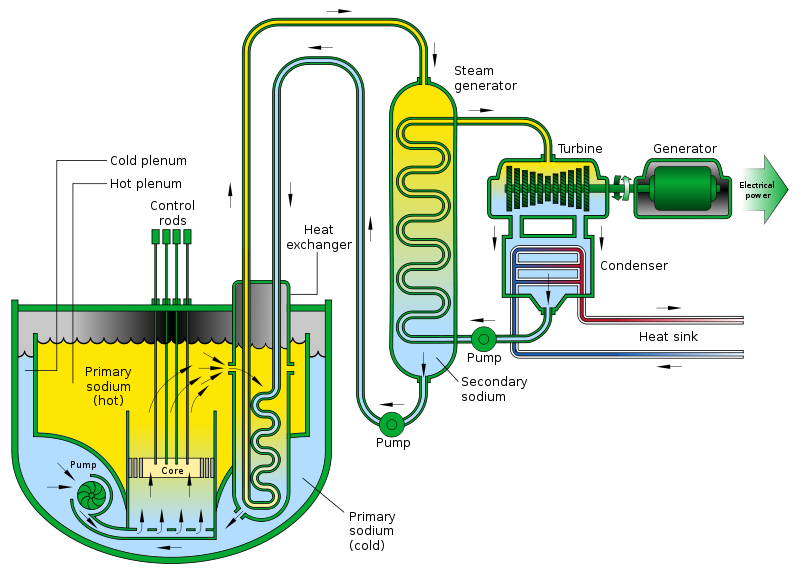Fission Reactors: Common Designs

Some common designs for fission reactors include:

(http://www.nukeworker.com/pictures/albums/userpics/12116/BWR2.gif)
Boiling water reactors(BWR): Operate around 7 MPa and 573 K
with regular water as the moderator and coolant. Water boils at the
top of the core and provides steam to turbines directly. These
reactors use slightly enriched UO2. [5]

(http://www.gg.uwyo.edu/media/energy/nuclear/production/diagrams/rec_G2-pwr.gif)
Pressurized water reactors(PWR): Operate around 14 MPa and
573 K with regular water as the moderator and coolant. Heat is
transferred from the core of the reactor to steam generators via
intermediate heat exchangers. These reactors also use slightly
enriched UO2. [5]

(https://cna.ca/wp-content/uploads/2014/06/CANDU-reactor-schematic.png)
Heavy-water moderated reactors (CANDU): Operate around 15 MPa
and 573K with regular water as the coolant, and heavy water as the
moderator. The heavy water is contained within a calandria through
which the coolant circulates, transferring heat to steam generators.
These reactors use natural UO2. [5]

(https://cna.ca/wp-content/uploads/2014/06/CANDU-reactor-schematic.png)
Magnox/advanced gas cooled reactors(AGR): These reactors use
carbon dioxide gas as their coolant, and graphite as their
moderator. The Magnox reactors were retired in favor of advanced
gas-cooled reactors (AGR) which use stainless steel clad slightly
enriched UO2 fuel rods, as opposed to
the natural uranium and magnesium alloy clad fuel rods used in
Magnox reactors. AGR reactors can operate at higher temperatures
than Magnox reactors. Both reactors follow the same concept as the
other reactors of circulating the coolant to transfer heat to steam
generators. [5]

(http://upload.wikimedia.org/wikipedia/commons/thumb/1/1c/Very_High_Temperature_Reactor.svg/1280px-Very_High_Temperature_Reactor.svg.png)
High-temperature helium cooled reactors (HTGR): Operate
between 973 K and 1273K between 5 MPa and 8 MPa.These reactors use
helium gas the coolant and graphite as the moderator. These reactors
use coated-particle oxide or carbide fuel. Like the other reactors
the helium is circulated through to transfer heat to steam
generators. [5]

(http://large.stanford.edu/courses/2013/ph241/waisberg1/images/f2big.png)
Liquid-metal cooled fast breeder reactors (LMFBR): Fast
reactors do not need moderation since their chain reaction is
sustained entirely by fast neutrons. Fast reactors are smaller since
they do not need moderation components and thus are common on
submarines where space is limited. In these reactors liquid-metal is
used as the coolant, which circulates through transferring heat to
steam generators. UO2 or PuO2
pellets clad in steel are used to fuel these reactors. [5]

Next: The Fusion Process
Previous: Fission Reactors: Components
Title Page





